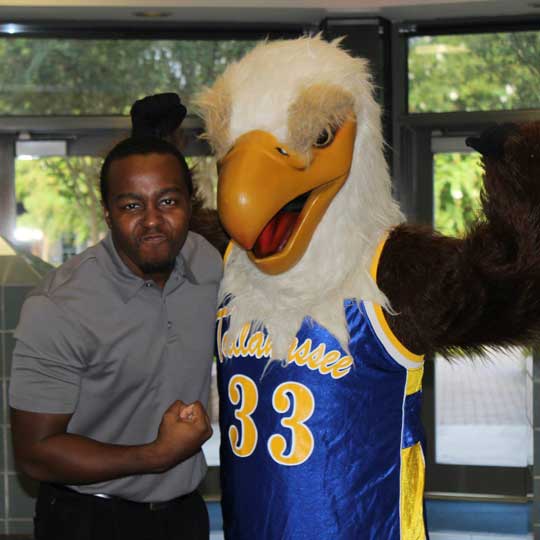
I know it was not ideal
But you made it through.
Thank you for being a friend
We win together.
Life can be painful sometimes
You learned to let go.
You're the ringing in my ears
You kept me smiling.
It is easier to cope
As long as you're there.
You keep me from giving up
You make things pleasant.
I wont drop the ball on this
I value your trust.
I'm proud that you keep going
I know he is too.
You helped me get my foothold
I'll always be there.
Sometimes taken for granted
You keep him balanced.
You know all of your own flaws
You hold yourself back.
You turned it into passion
You are a hero.
But if you choose to face it
Then do it with swag.
Yet you have not turned away
You're on your own path.
You have wagered your future
I know you will win.
Turbulent life, troubled heart
Lost in your own thoughts.
You know you deserve so much
You ain't gonna quit.
I am fortunate you're there
I love you, always.
You raised us both by yourself
My success is yours.
Paying him took some real cash
Totally worth it.
A bright spot on BTP
The best designer.
He is less, and also more
Lost in outer space.
Artistic and hard-working
My photographer.
gravity pulls and pushes
the dance continues.
Willing to admit his flaws
My favorite roommate.
Throughout its four seasons, 2014 bore witness to a countless number of beginnings and ends. Now, as it always is, the last death of the year is to the year itself. Farewell 2014. You will not be forgotten.
I will not mourn for you, 2014. To do so would be an insult to the life you lead. You were as much a puzzle onto me as I know I was onto you. I was a leaf, and you were my canyon. The wind blew me through your treacherous ravines. I did not ask to be taken there, but asking is not a luxury afforded to a leaf. With time I found that there was somewhat of a beauty is in your depths. You pushed me. You pushed me hard. It was more than I thought I could take, yet here I remain.
I am a better person for having met you. You taught me new levels of desperation, but also of the reach of my own abilities. Your icy love has brought greater strength and clarity to my resolve. My mind will hold strong to every lesson you've taught me. My heart will forever bare your scars.
Report Card
In 2014 I learned a tremendous amount about myself. I now have a clear path for the grand dreams I plan to accomplish. This year I've also become better at communication, and I am more confident than ever. I am also more intelligent than ever. Despite all of those strides, and despite committing myself to my work intensely every day of the year I still failed to earn even a minimum wage. Money is not success, but its absence prevents me from reaching other goals. Internally this was a milestone year full of very positive things, but finishing my projects are earning a standard income were part of goal, and my magnitude of failure towards those goals makes this one of the worse years in my personal history.
My unfair, biased, hand-picked favorites of 2014
What I did right in 2014
Phase One ends with the successful sale of my startups. I haven't proven to myself that I have what it takes to complete Phase One. Until I can demonstrate an ability to finish this current phase I wont openly describe the subsequent ones for fear of generating too much fruitless hype and concern of diverting too much of my energy. My goals are vivid, and my longing for it is strong, but for now that side of me will exist exclusively in my journals and in my dreams.
What I did wrong in 2014
I also failed my LESS partners. I was unable to transition us into a successful launch. I kept the team together, I'm happy about that. But I wasn't a good enough entrepreneur to capitalize on the opportunity in front of me. LESS is still stuck and I can still do better. I need to be a better coder, I need to be a better communicator, I need to be a better designer. I don't know what I'm missing, but whatever the problem is I will fix it.






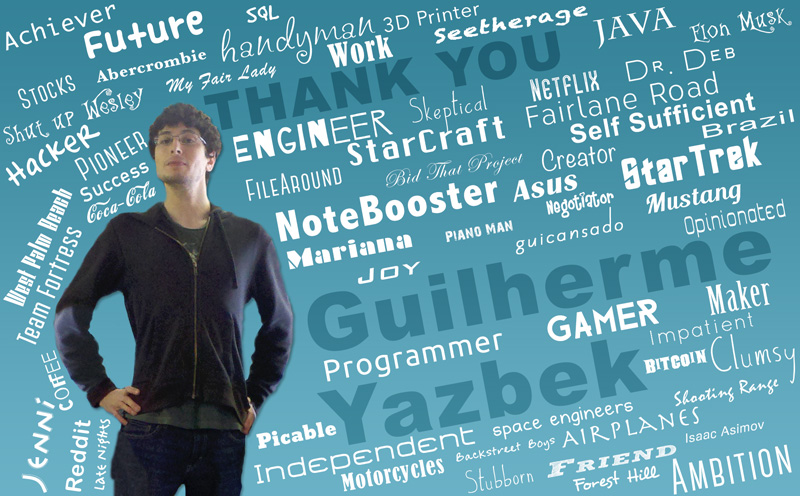
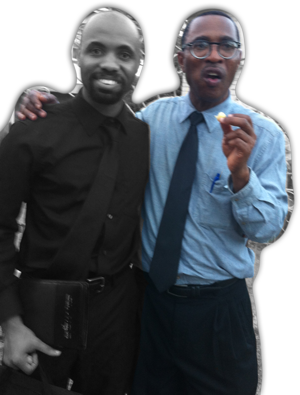
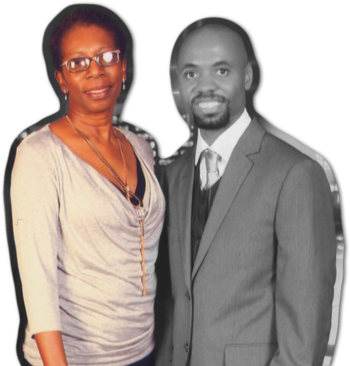


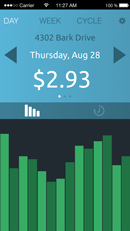



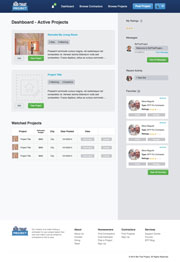






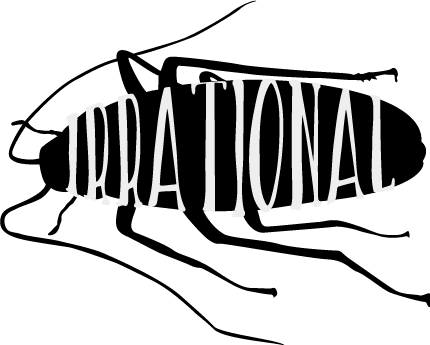

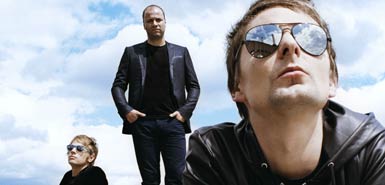 I don't know what they want, I don't know if they can be stopped, and I don't think I mind at all. Muse sort of blind-sighted me. I've been vaguely aware of their existence for a few years, but I've never had the desire to listen to their work. I finally got around to it this year when Tekel gave them to me as a part of a musical goodie basket. They have a lot of bland tracks, but to their credit, their lyrics are imbued with a degree of emotional intelligence higher than that of the average rock band. And on the rare occasion when they get all the elements just right, their stuff stuff can be remarkable and quite unlike anything else I've encountered before. Their sound is what I'd expect to hear if Pink Floyd mated with the Star Wars universe. They make music that feels like it belongs in an epic Space Opera. I am very happy about that.
I don't know what they want, I don't know if they can be stopped, and I don't think I mind at all. Muse sort of blind-sighted me. I've been vaguely aware of their existence for a few years, but I've never had the desire to listen to their work. I finally got around to it this year when Tekel gave them to me as a part of a musical goodie basket. They have a lot of bland tracks, but to their credit, their lyrics are imbued with a degree of emotional intelligence higher than that of the average rock band. And on the rare occasion when they get all the elements just right, their stuff stuff can be remarkable and quite unlike anything else I've encountered before. Their sound is what I'd expect to hear if Pink Floyd mated with the Star Wars universe. They make music that feels like it belongs in an epic Space Opera. I am very happy about that.


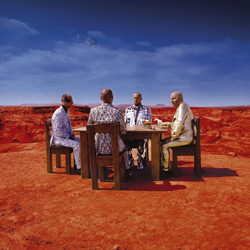


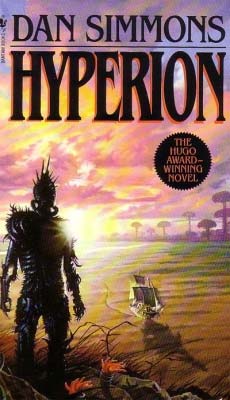 Hyperion - I listened to it on recommendation from Andrew. I thought I'd be getting a Dune-caliber epic. I was wrong. Perhaps it's my fault for setting the bar impossibly high. But even without comparison to Dune Hyperion is still poorly written and unevenly paced. It's an insult to the John Keats poems from where it draws it's inspiration. And even with its obvious failures, I still liked it. The book had some very compelling aspects. I credit Dan Simmons with being a good researcher and a creative visionary. He's just not a good story teller.
Hyperion - I listened to it on recommendation from Andrew. I thought I'd be getting a Dune-caliber epic. I was wrong. Perhaps it's my fault for setting the bar impossibly high. But even without comparison to Dune Hyperion is still poorly written and unevenly paced. It's an insult to the John Keats poems from where it draws it's inspiration. And even with its obvious failures, I still liked it. The book had some very compelling aspects. I credit Dan Simmons with being a good researcher and a creative visionary. He's just not a good story teller.
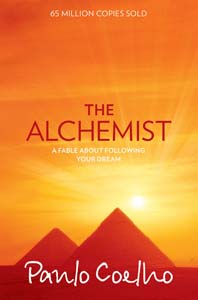 The Alchemist - Fantasy is a great mechanism for introducing people to new ideas. It gets past our usual resistance against things that are new and different. It can be used as a Trojan horse, implementing metaphor to teach us things that apply to our real life. That is what I see in the Alchemist. Behind its veil of fantasy and mysticism it provides a step by step account of the road to entrepreneurial success. A book like that doesn't appeal to everybody. But for me it's a reminder of why I should continue. It's a comforting reassurance that the path I am on mirrors that of many other people who have aimed for big things, no matter what their starting point.
The Alchemist - Fantasy is a great mechanism for introducing people to new ideas. It gets past our usual resistance against things that are new and different. It can be used as a Trojan horse, implementing metaphor to teach us things that apply to our real life. That is what I see in the Alchemist. Behind its veil of fantasy and mysticism it provides a step by step account of the road to entrepreneurial success. A book like that doesn't appeal to everybody. But for me it's a reminder of why I should continue. It's a comforting reassurance that the path I am on mirrors that of many other people who have aimed for big things, no matter what their starting point.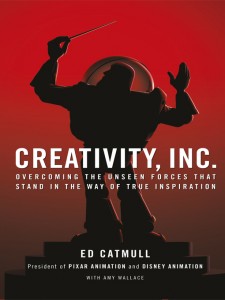 Creativity Inc - Written by Pixar's President Ed Catmull, this book tells the story of Pixar's creation and the valuable lessons learned along the way. Part management theory and part memoir, its told in a plain and personable style that give a seemingly candid look into the inner workings of their company's legendary culture. Ed narrates through the successes and many failures Pixar encountered and provides explanations not just on what they happened but also on what the company did to better prevent that type of mistake in the future. I haven't had any major business success yet. Until I do, the personal accounts in this book may be the closest I'll get to understanding the experience.
Creativity Inc - Written by Pixar's President Ed Catmull, this book tells the story of Pixar's creation and the valuable lessons learned along the way. Part management theory and part memoir, its told in a plain and personable style that give a seemingly candid look into the inner workings of their company's legendary culture. Ed narrates through the successes and many failures Pixar encountered and provides explanations not just on what they happened but also on what the company did to better prevent that type of mistake in the future. I haven't had any major business success yet. Until I do, the personal accounts in this book may be the closest I'll get to understanding the experience.
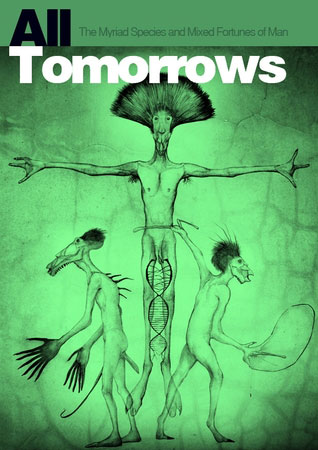
 Interstellar is a very bold film. It's a gem among Hollywood blockbusters. It's a big budget movie that tackles deep ideas and, even more remarkably, treads new ground.
It explores the tension between family and species, it's bold enough to address the purpose of human life, the abandoning of ignorance, and the deadly effects of stagnation.
It also manages to deliver those heavy notions while wrapped in some of the most polished space-scapes ever seen on screen. It's a compelling combination. For some this film may create a longing for something they didn't know they wanted.
It's a calling card for all humanity to stop looking down and start looking up again. We are urged to embrace the future, whatever it may hold.
Interstellar is a very bold film. It's a gem among Hollywood blockbusters. It's a big budget movie that tackles deep ideas and, even more remarkably, treads new ground.
It explores the tension between family and species, it's bold enough to address the purpose of human life, the abandoning of ignorance, and the deadly effects of stagnation.
It also manages to deliver those heavy notions while wrapped in some of the most polished space-scapes ever seen on screen. It's a compelling combination. For some this film may create a longing for something they didn't know they wanted.
It's a calling card for all humanity to stop looking down and start looking up again. We are urged to embrace the future, whatever it may hold. By no means is this a great movie. The only reason it mattered to me is because I have a crush on Aubrey Plaza. The movie is about unhealthy relationships and the way they can stretch on longer than they probably should. It's message is about recognizing when to call an end to a relationship, and also the importance of closure. The movie captures the strange emotions of watching someone close to you slowly change into a person you no longer recognize. Also... zombies.
By no means is this a great movie. The only reason it mattered to me is because I have a crush on Aubrey Plaza. The movie is about unhealthy relationships and the way they can stretch on longer than they probably should. It's message is about recognizing when to call an end to a relationship, and also the importance of closure. The movie captures the strange emotions of watching someone close to you slowly change into a person you no longer recognize. Also... zombies.  Naruto is an adventure series about big goals, hard work, loss, and love. Now, after 15 years, it has finally come to an end. In the beginning I fell in love with the strategy and choreography of the fighting, but as time went on I realized the emotional depth it offered. It has a very realistic way of portraying emotions. I've laughed and cried along with it, knowing exactly the feelings their characters go through. What's more, I know that Jon also liked this series. He read it for the first few years and as far as I can tell it was one of his favorites as well.
The creators of Naruto understood what it was to work hard. That came across clearly in their writing. There have been many times when I have found kinship through Nartuo characters that I could not find in the people around me. The characters seemed to understand the struggles I was going through, and that made me feel less lonely.
Naruto is an adventure series about big goals, hard work, loss, and love. Now, after 15 years, it has finally come to an end. In the beginning I fell in love with the strategy and choreography of the fighting, but as time went on I realized the emotional depth it offered. It has a very realistic way of portraying emotions. I've laughed and cried along with it, knowing exactly the feelings their characters go through. What's more, I know that Jon also liked this series. He read it for the first few years and as far as I can tell it was one of his favorites as well.
The creators of Naruto understood what it was to work hard. That came across clearly in their writing. There have been many times when I have found kinship through Nartuo characters that I could not find in the people around me. The characters seemed to understand the struggles I was going through, and that made me feel less lonely.
 The Last of Us was a video game, but it was cinematic enough to be a movie. It's creators NaughtyDog are known for that. It's also a riveting drama filled with strong characters and an emotional story arch. The game's story is about survival in a post apocalyptic world of monsters. But from the beginning of the game it was clear that the real monsters were the human beings, not the infected zombies who roamed the streets.
The Last of Us was a video game, but it was cinematic enough to be a movie. It's creators NaughtyDog are known for that. It's also a riveting drama filled with strong characters and an emotional story arch. The game's story is about survival in a post apocalyptic world of monsters. But from the beginning of the game it was clear that the real monsters were the human beings, not the infected zombies who roamed the streets. 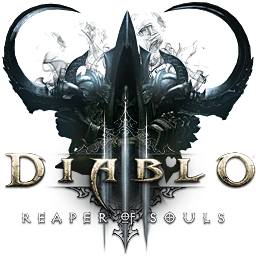 Diablo 3 is a repetitive, mind numbing waste of time, yet I spend more time playing it than any other game in the past 15 years. Even though I dislike the game, it has two redeeming qualities that keep me coming back: continuity of the characters, and the large social community. Diablo is a never ending game, and it's characters do not get deleted. I have been playing the same Wizard character for two years. That continuity creates an artificial sense of accomplishment that I appreciate. That is in contrast to a game like StarCraft which, while it provides excellent strategy, starts with a clean slate every time. Diablo allows me to feel rewarded for the time I spend in the game. The social aspect of Diablo is useful when I play online with my friends who are now scattered across the country.
Diablo 3 is a repetitive, mind numbing waste of time, yet I spend more time playing it than any other game in the past 15 years. Even though I dislike the game, it has two redeeming qualities that keep me coming back: continuity of the characters, and the large social community. Diablo is a never ending game, and it's characters do not get deleted. I have been playing the same Wizard character for two years. That continuity creates an artificial sense of accomplishment that I appreciate. That is in contrast to a game like StarCraft which, while it provides excellent strategy, starts with a clean slate every time. Diablo allows me to feel rewarded for the time I spend in the game. The social aspect of Diablo is useful when I play online with my friends who are now scattered across the country.
 Don't Starve is a prettier and more rigid version of Minecraft. The game is difficult. There are no instructions, no real tips, and no way to actually win. The goal is to survive for as long as you can, and the path for doing so is very open ended. It's the style and polish of the game that really makes it work for me. Some day I wouldn't mind creating something similar to this.
Don't Starve is a prettier and more rigid version of Minecraft. The game is difficult. There are no instructions, no real tips, and no way to actually win. The goal is to survive for as long as you can, and the path for doing so is very open ended. It's the style and polish of the game that really makes it work for me. Some day I wouldn't mind creating something similar to this.
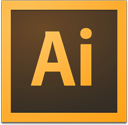
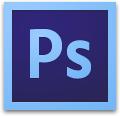






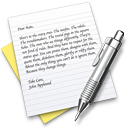

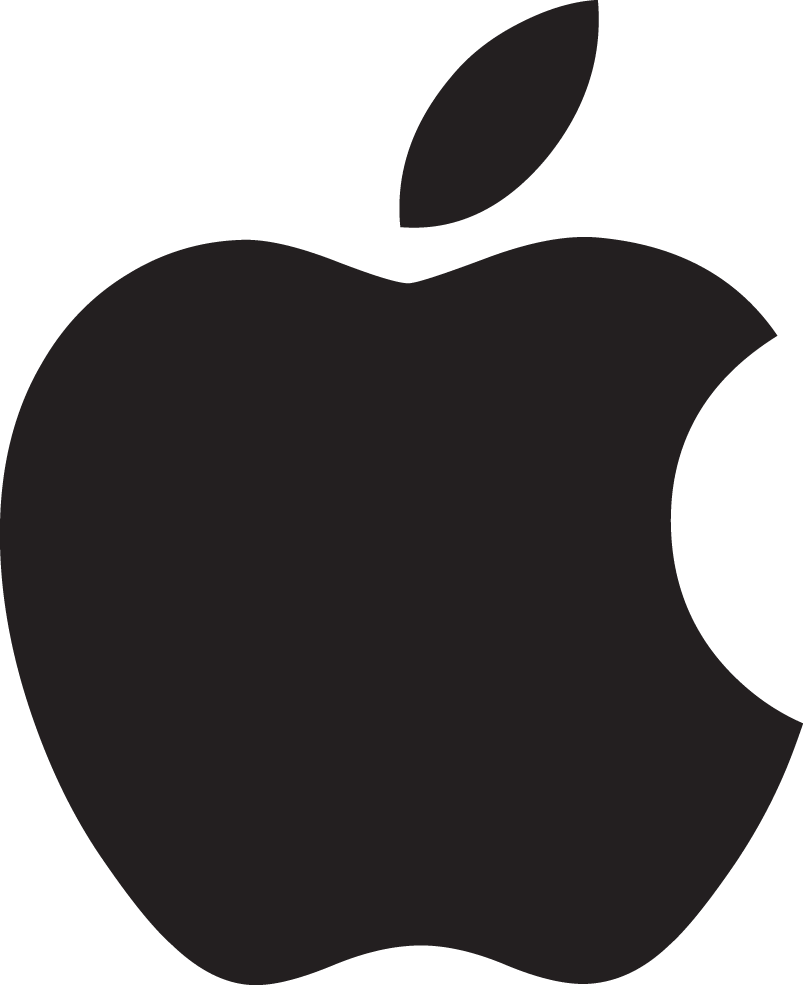


 The most inconveniently situated device Apple has made in decades, the Mac Pro is simultaneously a huge achievement, a great product, and an absolutely terrible computer.
The most inconveniently situated device Apple has made in decades, the Mac Pro is simultaneously a huge achievement, a great product, and an absolutely terrible computer.



